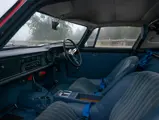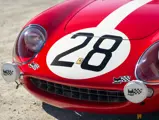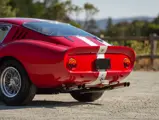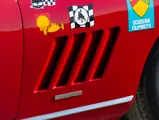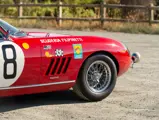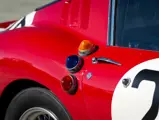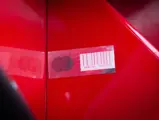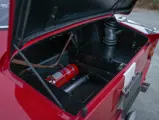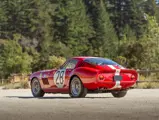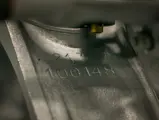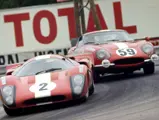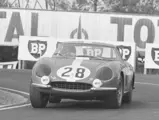
1966 Ferrari 275 GTB Competizione by Scaglietti
{{lr.item.text}}
$7,705,000 USD | Sold
{{bidding.lot.reserveStatusFormatted}}
- The 11th of 12 examples built featuring a 250 LM-type dry-sump Tipo 213 competition engine, thin-gauge aluminum alloy coachwork, and overwhelming use of lightweight components
- Campaigned by Scuderia Filipinetti; one of four factory-supported privateer teams
- Three-time 24 Hours of Le Mans entrant in 1967, 1968, and 1969
- Class winner at the 1967 24 Hours of Le Mans, 1969 1000 KM of Spa-Francorchamps, and 1969 500 KM of Imola
- Ferrari Classiche Red Book certified; accompanied by its numbers-matching engine and gearbox, and numerous ancillary components
- Presently fitted with a six-carburetor high-performance engine and custom transaxle built by Roelhofs Engineering of The Netherlands
- Restored in 2018 and optimized for vintage competition
THE LAST OF THE FACTORY COMPETITON GRAND TOURERS
In July 1964, the FIA denied homologation recognition to Ferrari’s rear-engine 250 LM racecar, justifiably claiming that the model bore so little relation to a production car that it had no place competing against standard GT cars. Following this stinging rebuke, Ferrari responded by forging a more legitimate GT entrant out of the production 275 GTB. This effort was still inadequate, however, as too much weight was shaved from the production car for the initial 275 GTB Competizione prototype to earn FIA approval.
Returning to the drawing board, Ferrari built three Speciale 275 GTB competition examples at a compromised weight, and these were finally approved, though they arrived too late in the 1965 season to achieve much other than a class win at Le Mans. Having settled on a satisfactory production formula, Maranello earmarked ten more cars for the 1966 season with similar modifications, featuring standard aluminum alloy coachwork and external fuel filler caps on the right rear fenders.
During the spring of 1966 Ferrari began building a final series of 275 GTB/C examples that bore superior modifications. Founded on the long-nose variant equipped with the preferred double-ended universal joint torque tube, these dozen cars were built on specially lightened chassis and clothed in paper-thin aluminum half as thick as the standard alloy material. Aluminum was furthermore used in the floorpan and twin 140-liter fuel tanks, while the transaxle case, special high-lift camshaft, sump plate, clutch bell housing, and the timing case covers were all cast in lightweight magnesium alloy. Plexiglas was fitted on the all the glass surfaces except the windscreen, completing the model’s low-weight profile. Power was provided by the new Tipo 213 competition engine, a dry-sump motor that was strategically placed lower and further amidships to improve weight distribution. Larger rear wheels necessitated more bulbous rear fenders, which contributed to the model’s fierce aesthetics.
Only twelve of the second-series 275 GTB/C examples were built, and they appropriately represented the ultimate achievement for privateer tifosi, as the model proved to be the final GT car built by Ferrari’s competition department. It followed up its predecessor’s class win at Le Man with two more such triumphs in 1966 and 1967, resulting in a GT-class three-peat at La Sarthe, the final victory in 1967 being provided by the featured car, chassis number 09079.
275 GTB COMPETIZIONE, NUMBER 09079
The second-to-last example built, this brilliant GTB’s history commenced with a July 1966 order by the Societe Anonyme pour la Vente des Automobiles Ferrari (SAVAF), an official marque dealer in Switzerland. With the Tipo 213 competition engine being completed in September, the GTB was cosmetically finished in Rosso Chiaro over an interior trimmed in blue cloth upholstery, complementary blue leather paneling and carpets, and a light gray headliner. As a competition car, 09079 was fitted with right-hand drive steering, in the great tradition of all the sports-racing Ferraris of its era.
As detailed in Ed Heuvink’s 2001 book Scuderia Filipinetti, and confirmed by the research of marque authority Marcel Massini, in late May 1967 the 275 was sold to the Scuderia Filipinetti, one of only four preferred privateer teams to receive direct support from the factory. Adorned with Filipinetti’s signature white stripe and fitted with two additional foglamps, 09079 was decorated with #28 and entrusted to former team driver Dieter Spörry and journalist Rico Steinemann.
The GTB’s start was inauspicious enough, with the car only qualifying for a 34th place start. Ford GT40 Mk IV driver Mario Andretti even jokingly dismissed the car as a museum piece. However, hours later Andretti’s Mark IV was sidelined along with numerous other prototype-class entrants, while 09079 continued to ascend the field. By Sunday morning Spörry and Steinemann had advanced as high as 10th, establishing a commanding lead in the GT class. Eventually finishing 11th overall, the GTB averaged 178 kph while triumphing over a field of newer Corvettes and Porsche 911s in the GT class.
Shortly after the race, team principal Georges Filipinetti sought a buyer for 09079, and in early 1968 he sold the GTB/C to Jacques Rey, an occasional driver for the Scuderia Filipinetti. Rey clocked the 11th fastest time at the Le Mans tests in April 1968, although the annual June race was postponed that year due to the “May 1968” social upheaval and labor unrest. Finally entering the re-scheduled event in September, the car wore #17 and qualified 38th on the starting grid. Unfortunately, suspension issues forced its early retirement after only eight hours.
Nineteen sixty-nine marked a rebound for the chassis 09079, as Rey drove the GTB to a class win and 14th overall finish at the 1000 KM of Spa-Francorchamps in May, and another class victory (14th overall) at the 500 KM of Imola in September. Unfortunately, a third attempt at Le Mans ended in disqualification for a rule infraction. These final triumphs marked the conclusion of 09079’s impressive racing record.
POST COMPETITION HISTORY
By 1970 Rey sold the 275 to California resident Phil Henny, and it then passed to four more American owners before being acquired in 1979 by John Wallace, who retained possession for six years. During his ownership, the GTB was presented at Mark Dees’ annual Picnic and Ferrari meeting in May 1981, and at the 1984 Monterey Historic Races and concurrent Ferrari International Concours d’Elegance.
Later during Wallace’s ownership, like many vintage racing Ferraris, 09079 was rebodied after is was unfortunately subjected to a garage fire in Los Angeles in 1985. Understandably, the original wafer-thin aluminum bodywork simply melted away in many places. However, importantly, the major mechanical components remained intact, as evidenced by the Ferrari Classiche Red Book Certification which confirms the originality of the chassis, engine, and transaxle.
The car was then purchased in April 1985 by a Swiss investment broker named Charles Gnadinger, who in turn sold the car to Bruno Zambelli of Sant’ Agata Bolognese. Mr. Zambelli embarked on a full restoration that included the fabrication of a new thin-gauge aluminum body by Carrozzeria Egidio Brandoli of Montale, Italy, a noted shop often retained by Ferrari Classiche itself for important coachwork restoration. After being repaired by Brandoli, the 275 was then exhibited at the 1992 Coppa Intereuropa Autostoriche at Monza.
In August 1997, the Ferrari was sold to Yoshikuni Okamoto, a Japanese collector who presented the car at the 1999 Forza Ferrari meeting at the Suzuka circuit. After passing to one more Japan-based enthusiast, the 275 returned to California in 2006 under the stewardship of broker David Gizzi, who exhibited the car at the 2006 Pebble Beach Concours d’Elegance. In preparation for this showing, the GTB was comprehensively refurbished by Richard Freshman’s well-known Fossil Motorsports, including an exterior refinish in the proper 1967 Le Mans livery, and a new interior in the proper blue materials. At Pebble Beach the GTB was awarded 2nd in its class, losing only by a few tenths of a point to the prototype 250 Testa Rossa.
FROM THE SHOW FIELD BACK TO THE TRACK
In September 2006, the Ferrari was sold to English enthusiast Ross Warburton, and he prepared the car for racing use and campaigned it in numerous vintage events, including the 2008 Le Mans Classic, the 2010 Italian Historic Car Cup, the 2010 Silverstone Classic, the 2012 Tour Auto, and the Fordwater Trophy at the 2012 Goodwood Revival. After being displayed at the 2013 Rétromobile in Paris, the GTB was then purchased by Brendan Gallaher and Michel Stern of Bend, Oregon, who submitted the car to the esteemed specialists at GTO Engineering in Berkshire, UK. GTO Engineering corrected all details needed for Ferrari Classiche Certification and the car received its Red Book in October 2013.
Chassis 09079 was then presented at a number of premium exhibitions, participating in a special gathering of 275 GTB Competizione cars at the 2014 Cavallino Classic, and being one of 60 cars invited to display at Ferrari North America’s 60th Anniversary celebration on Rodeo Drive in Beverly Hills in October 2014. Three months later the car was featured in an article in Octane magazine written by the esteemed Pebble Beach judge and author Winston Goodfellow.
Acquired by the consignor in January 2015, the Ferrari was treated to a comprehensive three-year restoration primarily performed by Terry Scarborough Racing (TSR) in Sonoma, California. All mechanical elements were rebuilt or replaced as needed by TSR, including a complete rebuild of the original transaxle. The original Tipo 213 racing engine was rebuilt by Ted Yamashiro, a vintage Ferrari expert who maintains one of the nation’s most respected collections. Cosmetically, the interior was retrimmed with proper materials in the correct colors as needed.
As the restoration developed, the consignor decided to have the car optimally prepared for vintage racing events. As such, the original engine and transaxle were spared and replaced with upgraded components custom-built by Roelhofs Engineering in The Netherlands. Numerous ancillary parts, including the fuel tanks and fuel lines, brake calipers, radiator, shock absorbers, clutch, and exhaust system were replaced with upgraded racing components providing superior performance and reliability. Total restoration costs, including sourcing the spare engine and transaxle, totaled over $750,000, with invoices for the work on file. Maintained and fine-tuned by renowned Dennison International, 09079 is optimally set up for rallies and racing; however, the correct original components are included and can readily be reinstalled for concours display.
Since restoration, 09079 was displayed 2018 Pebble Beach Concours d’Elegance and is ready for any event its next owner has in mind. Optimally prepared for driving use, but easily revertible to its original factory configuration, this 275 GTB Competizione offers both historical significance and modern performance capability.
As the penultimate GT car prepared by the factory’s competition department, 09079 will be welcomed at premium concours d’elegance around the world; it may also be enjoyed as offered at events like the Tour Auto, Le Mans Classic, and preeminent vintage racing gatherings. In any event, 09079 is a beautifully prepared and maintained example of one of Maranello’s rare competition cars that would crown most any collection and invites the consideration of serious Ferrari collectors the world over.
























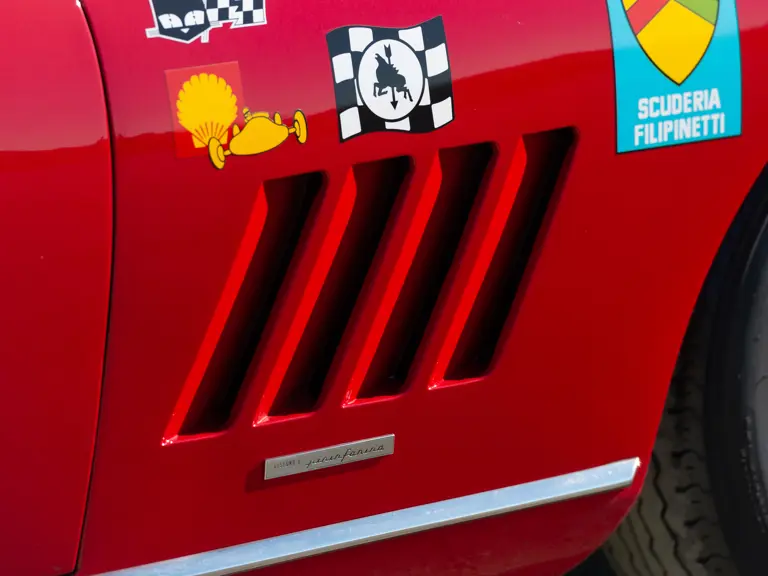


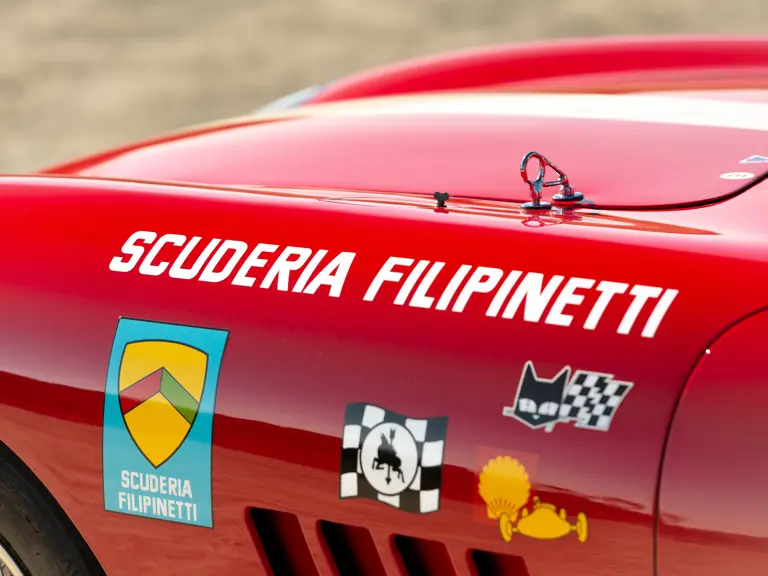

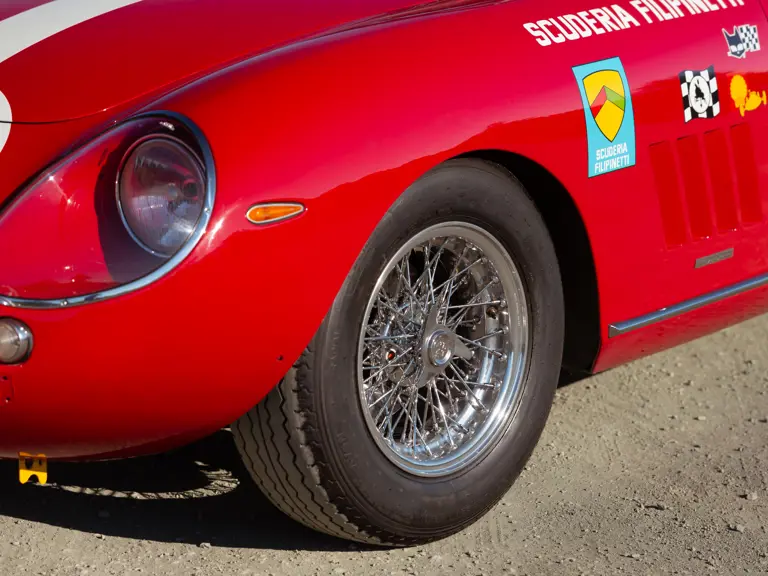















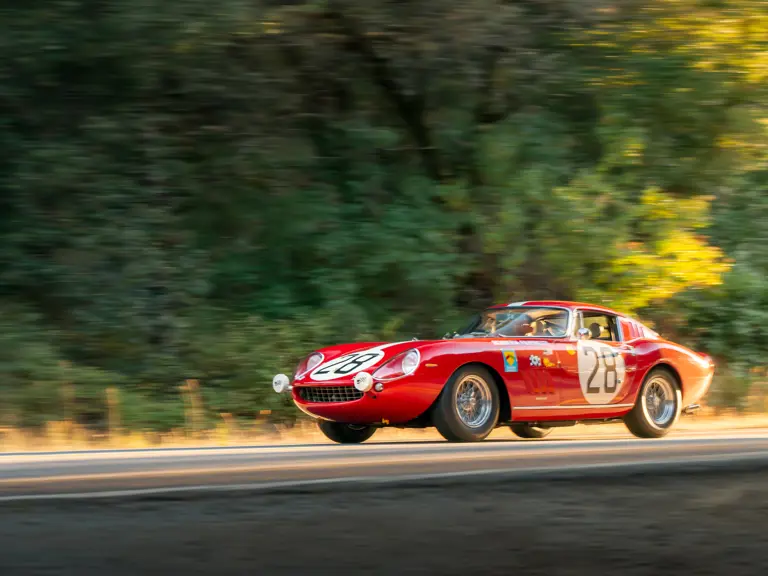











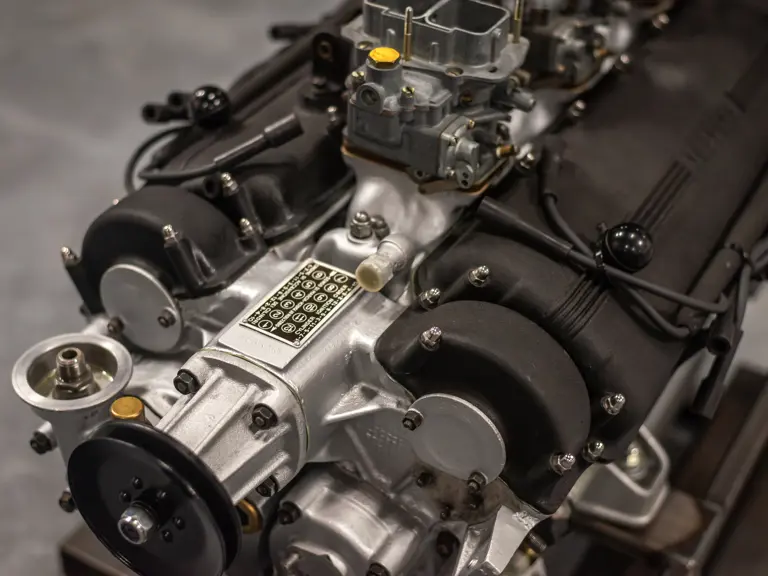

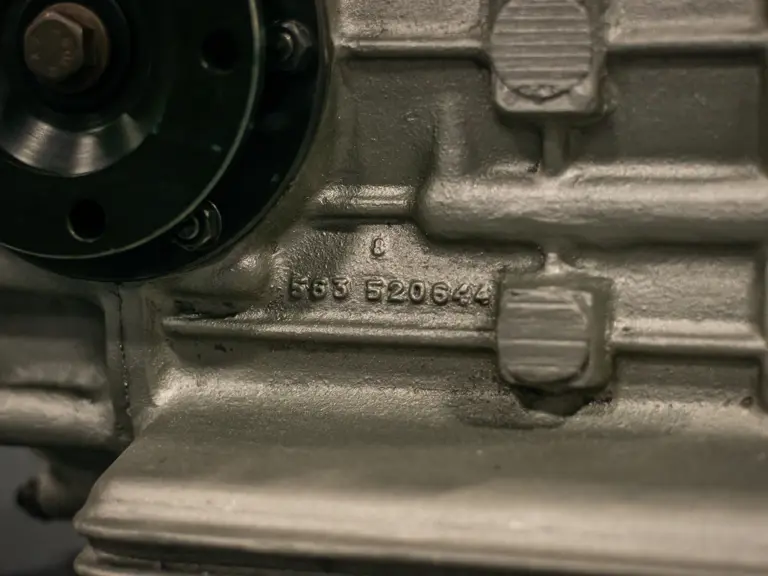
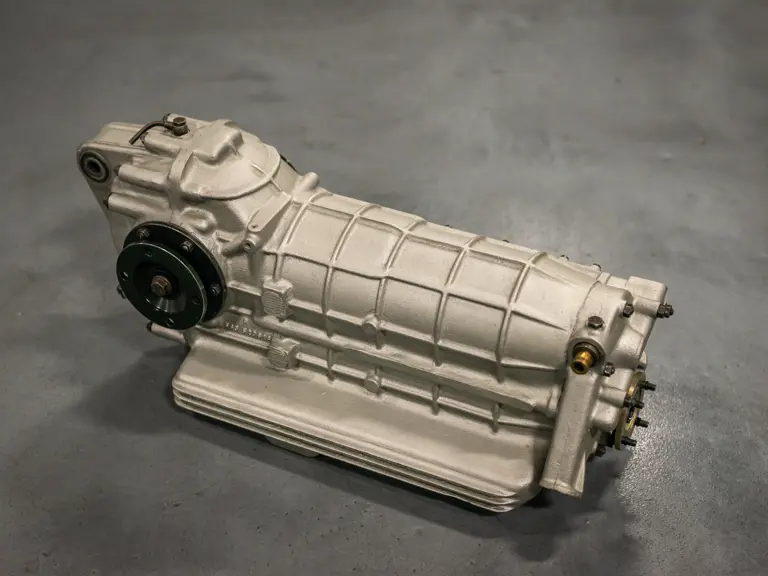











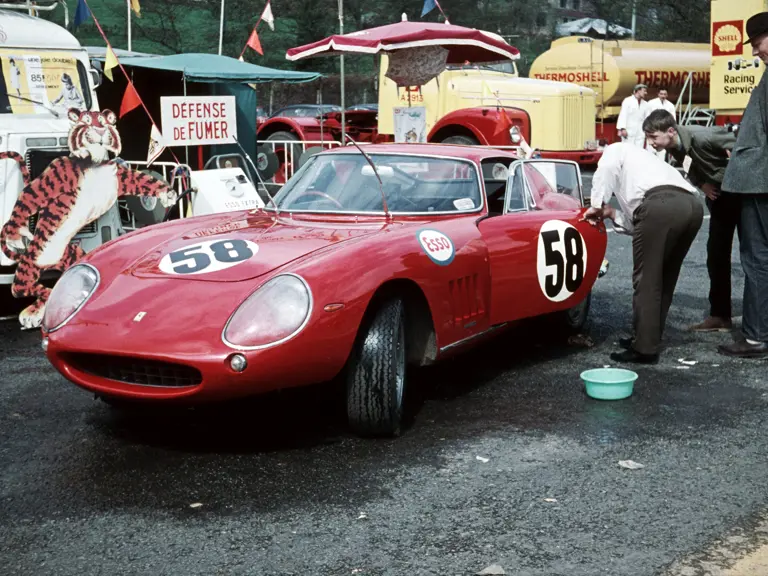


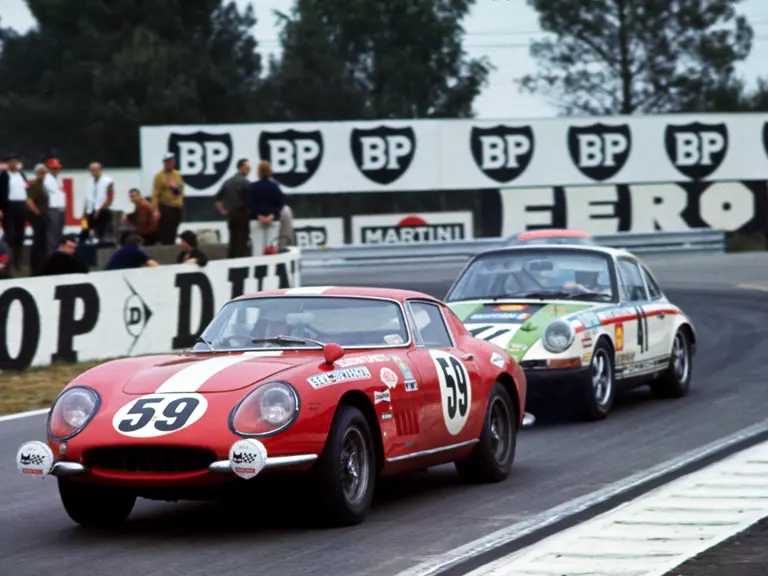


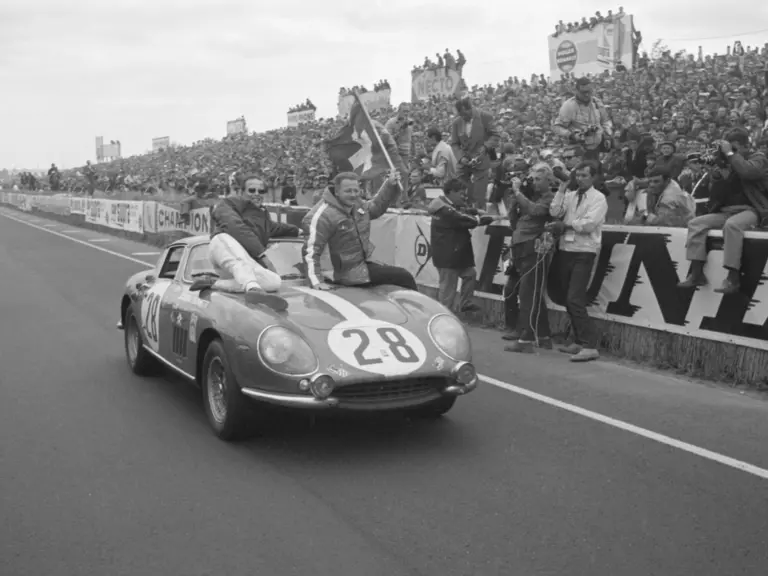
 | Monterey, California
| Monterey, California










